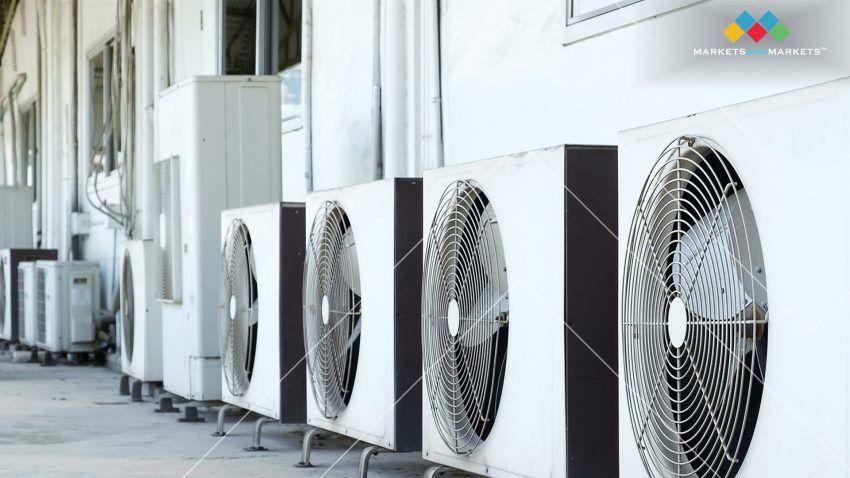The heat pump market is experiencing unprecedented momentum, with industry projections revealing a staggering transformation ahead. The global heat pump market size is surge to grow USD 162.64 billion by 2030 from USD 83.27 billion in 2025, at a compound annual growth rate (CAGR) of 14.3% that signals one of the most dynamic shifts in the energy technology sector, according to the latest research from MarketsandMarkets.
The Perfect Storm Driving Heat Pump Adoption
The Heat Pump Market size is expanding at an exceptional pace, fueled by rising energy costs, stringent carbon reduction mandates, and breakthrough technological advances are creating an environment where heat pumps have moved from niche solution to mainstream necessity.
Heat pumps transfer heat rather than generate it, making them remarkably energy-efficient alternatives to traditional furnaces and air conditioners. This fundamental advantage is capturing attention across residential, commercial, and industrial sectors as organizations scramble to meet sustainability targets while controlling operational costs.
Market Share Shifts Point to Geographic and Technological Frontrunners
The Heat Pump Market share is being reshaped by regional policy initiatives and technological innovation. Europe continues to lead adoption, driven by aggressive climate policies and gas supply concerns that accelerated replacement programs. North America is witnessing rapid catch-up growth as federal incentives and state-level regulations make heat pumps economically compelling. Meanwhile, Asia Pacific markets are emerging as manufacturing powerhouses and fast-growing consumer bases.
Ground-source and air-source technologies are competing for dominance, with air-to-air systems capturing significant residential market share due to lower installation costs. However, geothermal solutions are gaining traction in commercial applications where long-term efficiency and reliability justify higher upfront investments.
Industry Leaders Are Betting Big on Heat Pump Technology
Major manufacturers are pouring resources into research and development, racing to capture market share in what’s becoming a critical battleground for energy technology leadership. The shift isn’t limited to traditional HVAC companies, utilities, real estate developers, and even oil and gas companies are repositioning their portfolios to include heat pump solutions.
Innovation is accelerating across multiple fronts. Cold-climate heat pumps now operate efficiently at temperatures that would have been impossible just five years ago, opening previously locked markets in northern regions. Smart integration capabilities allow heat pumps to communicate with grid systems, enabling demand response programs that benefit both users and utilities. Natural refrigerant adoption is addressing environmental concerns while improving performance metrics.
What This Means for Your Business
The implications of this market transformation extend far beyond heat pump manufacturers. Real estate developers who integrate heat pump systems are seeing faster sales and premium valuations as energy efficiency becomes a primary buyer consideration. Facility managers are discovering that heat pump retrofits can deliver payback periods under five years while improving occupant comfort.
For investors, the heat pump market represents a rare combination of growth, policy support, and technological maturity. The sector is moving beyond early-stage risk into mass adoption, offering exposure to the energy transition without betting on unproven technologies.
Looking Ahead: The $162 Billion Opportunity Landscape
As the heat pump market size marches toward its 2030 projection, several trends will shape competitive dynamics and investment returns. Integration with renewable energy systems will become standard rather than optional, as solar-powered heat pumps offer compelling economics in residential markets. District heating networks incorporating large-scale heat pumps will transform urban energy infrastructure in major cities.
The market will also see increased specialization, with manufacturers developing solutions tailored to specific applications industrial process heating, data center cooling, agricultural operations rather than one-size-fits-all approaches. This segmentation creates opportunities for focused players to capture valuable niches within the broader market expansion.
Perhaps most significantly, heat pumps are transitioning from standalone appliances to nodes in integrated energy management systems. When connected to smart grids, battery storage, and building automation platforms, they become flexible assets that optimize energy use across multiple dimensions cost, carbon, and comfort.
Get Complete Market Intelligence
Understanding the full scope of opportunity requires diving deeper into regional forecasts, technology comparisons, and competitive landscapes that will determine winners and losers in this rapidly evolving market. For comprehensive analysis including detailed segmentation, company profiles, and five-year projections across type, refrigerant, rated capacity, and application categories, the full Heat Pump Market research report from MarketsandMarkets provides the authoritative data source energy professionals and investors need to make informed decisions.
For detailed forecasts, company deep dives, and exclusive market analysis, visit the comprehensive Heat Pump Market report at MarketsandMarkets.

